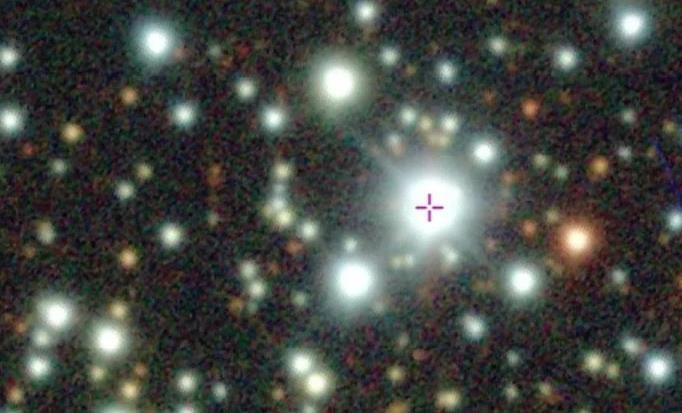A colossal, inexplicable cosmic phantom has obscured up to 75% of the light from its parent star each time it passes by. It is believed to be a fragmented planet.
Scientists continue to use the “transit” method—which relies on changes in the brightness of a star—to identify and measure objects that pass in front of it, typically planets. However, the changes observed in a binary star system located 2,300 light-years away have astonished researchers.

“Ghost planet” recently discovered – (Photo: The Astronomical Journal)
An object that scientists are still unsure how to classify, named TIC 400799224, was discovered when researchers from the Harvard-Smithsonian Center for Astrophysics (USA) used AI to sift through data from NASA’s TESS space telescope.
The strange object orbits the binary star system in the same manner that a planet orbits its parent star, with a cycle of 19.77 days. Each time it passes in front of the binary star system, it dims the light from the stars by 35% to 75%.
However, data indicates that it is not a neatly spherical planet, but rather something without a fixed shape, with most of its “body” composed of dense clouds of gas and dust. It appears as if something small is at the center, emitting so much gas and dust that it forms a gigantic, ghostly cloud.
“The nature of this celestial body is difficult to understand due to the significant amount of dust emitted. If it were formed by the disintegration of an object like the asteroid Ceres in our Solar System, it would only exist for about 8,000 years before disappearing. However, throughout the six years this object has been monitored, its periodicity and the amount of dust it emits have remained intact,” said Dr. Karren Collins, a member of the research team, in an analysis on Science Alert.
According to a paper recently published in The Astronomical Journal, there are several plausible explanations for the nature of this object.
- First, it could be a planet undergoing disintegration, transitioning from a solid state to a gaseous one.
- Second, it may be a small planet experiencing violent interactions with its parent star, continuously shedding material and forming clouds of gas and dust.
- Third, it might still be a young planet enveloped by the gas and dust cloud of its parent star’s protoplanetary disk.
Among these, researchers lean towards the second hypothesis; however, many also support the first hypothesis – a disintegrating planet.
Scientists hope that more advanced telescopes being developed will solve this mystery.

















































